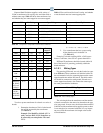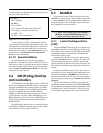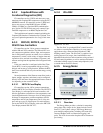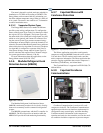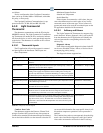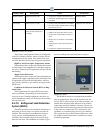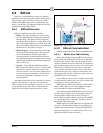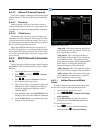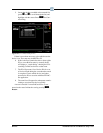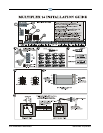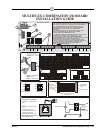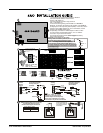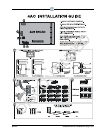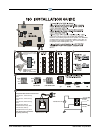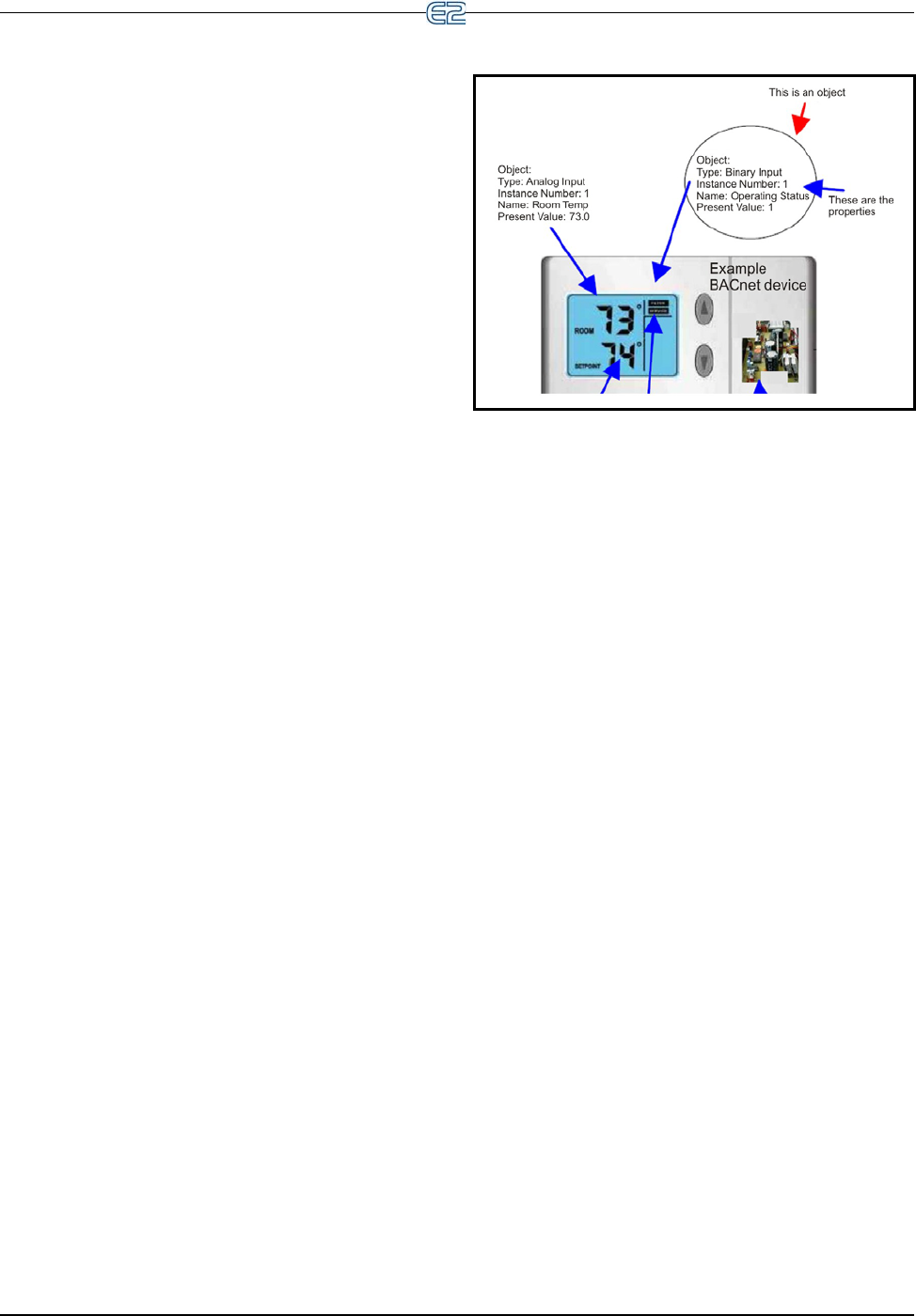
BACnet The RS485 Network and Hardware Setup • 6-13
6.4 BACnet
BACnet is a communications protocol for building
automation and control networks available for E2 versions
4.02 and above. Any of the three serial ports (COM2,
COM4, and COM6) can be used to communicate with
devices over BACnet. E2 supports BACnet devices that
communicate using MS/TP and IP.
6.4.1 BACnet Overview
BACnet is defined by three basic concepts:
• Object
- The general reference to sensors, actua-
tors, and other functional elements that make up a
BACnet device. The
objects fall into categories
specified by BACnet protocol. Analog Input object
and Analog Output object are two of the most com-
monly used objects. BACnet devices are defined on
the network as
a collection of “objects”.
• Obje
ct Property – Each object has several proper-
ties required by BACnet p
rotocol. The most com-
monly used property is Present Value. Other
common properties include
reliability and status
flags. Optional properties for objects such as analog
input include minimum and maximum range, high
and low limits, etc.
• Services –
Along with the definition of objects,
BACnet protocol defines “services”. These include
object access services, alarm and event services,
file access services, and a few more. Object access
services are the most commonly used since these
provide the fundamental “read/write” access to
object properties.
Data inside a BACnet device is organized as a series of
objects. Each objec
t has a type and a set of properties.
There is always at least one object in a device – it is used
to represent the device itself. This is called the Device
Object. The other objects represent the device’s data.
Figure 6-11
- BACnet Objects
6.4.2 BACnet Communication
BACnet supports MS/TP or IP based communication.
6.4.2.1 Master Slave Token Passing
Master Slave Token Passing or MS/TP is the protocol
used over RS-485 for BACnet. Each device on the link is
considered the “master” when it has the token. If it does
not have immediate need to use the token, it is required to
pass the token along to the next device. All devices on the
link that do not currently have the token are regarded as
slaves, and are expected to listen to any messages the cur-
rent master may have for it. Because some devices take
tu
rns being master, the link is effectively peer to peer (not
all MS/TP devices can be master).
It is possible for a device to be a constant slave, though
it
is uncommon, because in this case a device cannot send
such request as I-Am, notifications, etc.
MS/TP devices differentiate themselves with a MAC
address. MAC addresses
are unique identifiers set per
device and must be unique on the MS/TP line.
It should be noted that MS/TP BACnet devices do not
use their unique identifier for access
ing them. Instead, a
second identifier called a Device ID is used. This is
because BACnet traffic can be routed across IP or MS/TP
(i.e., the physical layer is different). The Device ID has a
much larger addressable range.
MS/TP requires only the baud rate
to be specified and
consistent. All other line disciplines are specified by the
standard and are therefore not configurable. MS/TP also
requires that the E2 to have a MAC address. This is con-
figurable per MS/TP route (serial port).



